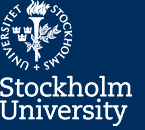Current research
Research interests
My current research area is studies of superconductors and other materials using nanocalorimetry. We are looking at mesoscopic crystals and thin films in magnetic fields at low temperature. Here is a short overview slide in Swedish if you are interested in a diploma work: Nanocalorimetry.pdfNanocalorimetry on iron-based superconductors
We have recently focused on looking at the P-doped 122 iron-based superconductors.
MgB2 and two-band superconductorsPhase diagram, surface superconductivity, two-band effects.
YBa2Cu3O7-x and vortex dynamicsVortex correlations, multi-terminal measurements, vortex glass.
For further information on my research, please see my publications or the research project database http://su.avedas.com/converis/person/2523
Instrumentation and experimental methods
Membrane-based nanocalorimeter
Over several years, my main research project has been to develop and use a differential, membrane-based nanocalorimeter for general specific heat studies of very small samples, ranging from 0.5 mg to sub-μg in mass. The calorimeter now operates over the temperature range from above room temperature down to 0.5 K. It consists of a pair of cells, each of which is a stack of heaters and thermometer in the center of a silicon nitride membrane, in total giving a background heat capacity less than 100 nJ/K at 300 K, decreasing to 10 pJ/K at 1 K. The device has several distinctive features:
- The resistive thermometer, made of a Ge1-xAux alloy, displays a high dimensionless sensitivity |dlnR/dlnT| ≥ 1 over the entire temperature range.
- The sample is placed in direct contact with the thermometer, which is allowed to self-heat. The thermometer can thus be operated at high dc current to increase the resolution.
- Data are acquired with a set of eight synchronized lock-in amplifiers measuring dc, 1st and 2nd harmonic signals of heaters and thermometer. This gives high resolution and allows continuous output adjustments without additional noise.
- Absolute accuracy is achieved via a variable-frequency-fixed-phase technique in which the measurement frequency is automatically adjusted during the measurements to account for the temperature variation of the sample heat capacity and the device thermal conductance.
The calorimeter is fabricated one-by-one by hand at our local clean-room facility, the AlbaNova NanoFab lab. Each calorimeter now consists of up to 10 layers, each including lithography, deposition, and lift-off. A last, much-needed step in the development is to do a batch fabrication of the calorimeter with back-etching as the last step. This step is currently in progress and will hopefully alleviate the strong demand for calorimeters.
Measurement & control softwareIn the lab, I have built up a general LabVIEW program for data acqusistion, control, and analysis of simultaneous, high-speed, and low-noise data. The system connects all our instrumentation as well as many others. Components include conventional instruments based on VISA (GPIB, serial, ENET etc.), PXI systems (fast-sampling ADCs, 24-bit boards, DACs, RIO / FPGA, real-time etc.), larger component systems (oscilloscopes, sample rotators, 3-axis magnet, 3He controller, etc.), and our remote-controlled, home-built preamplifiers.
FPGA-based lock-in amplifier systemI have also developed an FPGA-based lock-in amplifier that provides completely synchronous measurements of eight simultaneous inputs and with a resolution better than 1 in 105. This instrument is now used in most of our experiments, including the nanocalorimetry measurements and resistive and other transport measurements (Hall, Seebeck, IV, etc.).






